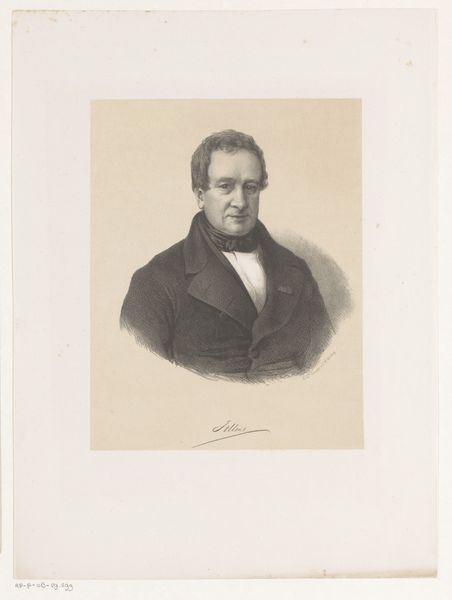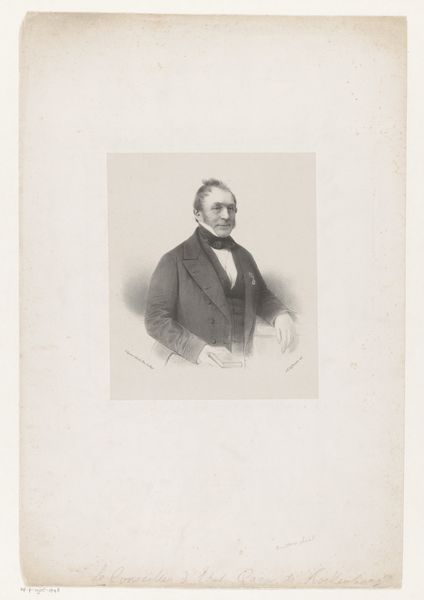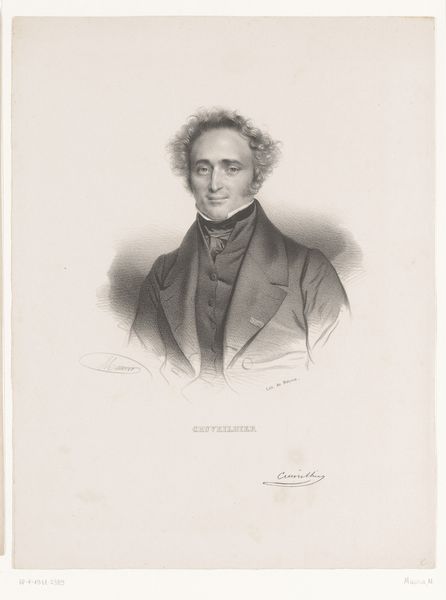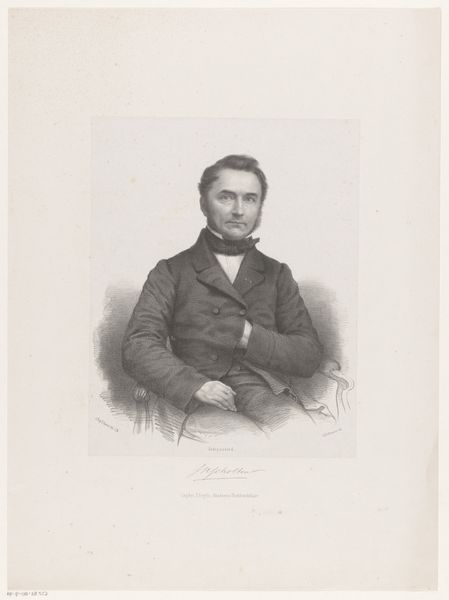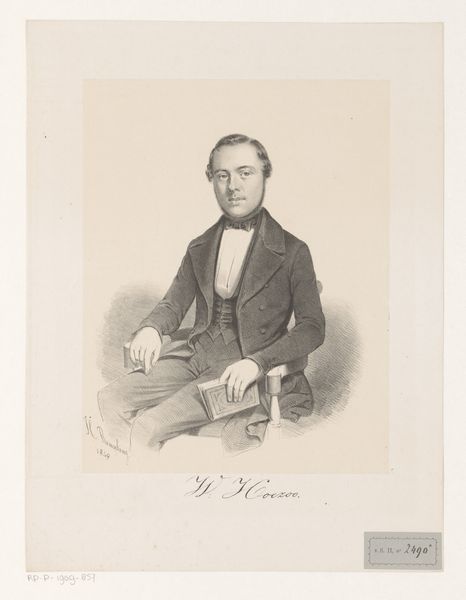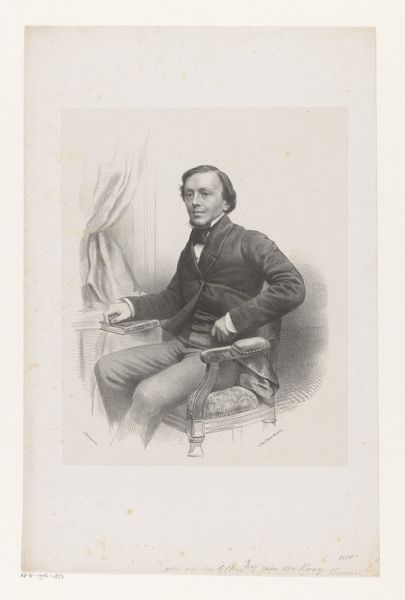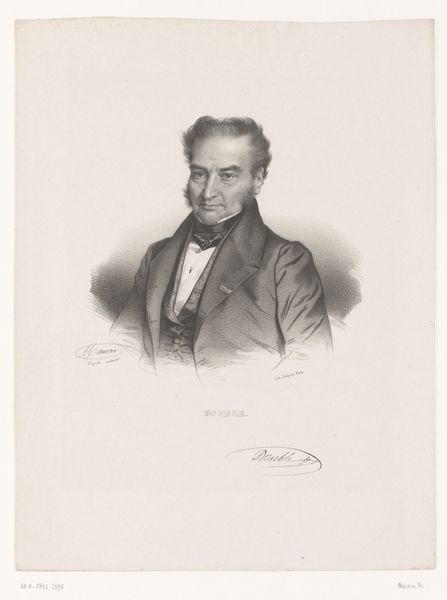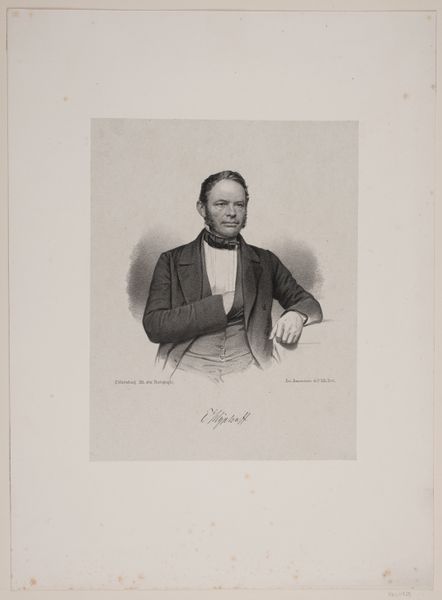
#
pencil drawn
#
personal snap photobooth
#
light pencil work
#
wedding photograph
#
photo restoration
#
pencil sketch
#
portrait reference
#
pencil drawing
#
portrait drawing
#
fine art portrait
Dimensions: height 495 mm, width 355 mm
Copyright: Rijks Museum: Open Domain
Curator: Here we have a portrait of Johannes Jacobus Prins, rendered in delicate pencil strokes by Johan Hendrik Hoffmeister. It likely dates from somewhere between 1851 and 1883. What's your first impression? Editor: The immediate feeling is one of reserved dignity. He looks almost…stiff, but in a respectable way. His gaze is direct, but not confrontational. And there's something about the medium, the pencil work itself, that gives it a rather melancholic feel. Curator: Yes, the piece certainly conveys the sobriety typical of the Dutch bourgeois in that era. The lithograph became popular, driven by the public’s perception of photography. We can examine Hoffmeister’s choice of medium to democratize traditional portraiture. Its inherent replicability broke down previous elite boundaries. Editor: And look at the careful attention to detail in his attire: the perfectly tied bow tie, the neatly tailored jacket. These are symbols of status, of course. The position he's assuming also contributes to this sense. Notice he is seated, with one arm draped casually over what appears to be the armrest of a chair. Curator: Precisely. It also reflects the values of the era – the rise of the merchant class and the growing importance of individual achievement and presentation in a rapidly changing social landscape. Editor: Do you think there is an intention in how the piece is rendered? Notice the subtle crosshatching in the shadows beneath his chin. Could Hoffmeister's method represent an inner quality to his model? Is the image of a sitter only skin deep, or can a piece be truly insightful? Curator: Intriguing questions! One thing is for sure: portraits such as this played a vital role in constructing and maintaining social identity in 19th-century Dutch society. It offered a readily consumable format to promote and solidify social standing. Editor: Considering the artistic approach of his piece, perhaps it shows us that external factors weigh greatly on how people were viewed. And even though those eras have passed, their effect and impression can linger. Curator: An important thing to consider as we appreciate this portrait today. It offers a glimpse into a specific time but speaks to enduring themes of identity and representation.
Comments
No comments
Be the first to comment and join the conversation on the ultimate creative platform.


